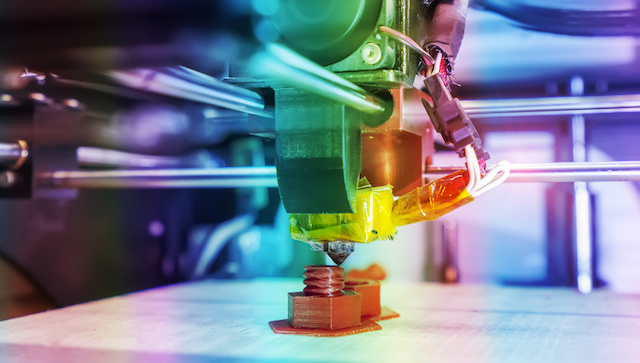
Analysts report the global market value of engineering plastics is over $104 billion. Engineering plastics are synthetic materials designed to withstand extreme environments. They also meet high-level performance standards.
Engineers design many polymers explicitly for unique components. Often, the component’s purpose is to execute niche, highly-specific functions. The context of these components’ functions is, frequently, automotive, aeronautic, and military machinery. A military-grade plastic has incredible qualities. These make it suitable for a broad range of custom, military-grade components.
But, machinists vary widely in their skill—and their capacity to manufacture these components. As an engineer or supply chain manager, how do you determine if a shop can machine the parts you need?
The U.S. Military uses plastic components for helicopters, weapons, and armored vehicles. These components must withstand extremes, including:
To function in these conditions, engineers develop cutting-edge polymers. Engineering polymers are synthesized at the molecular level to maintain unique properties. These properties take engineered plastics to a level beyond any naturally occurring material.
Engineering plastics give a wide range of components military-grade potential. They typically offer:
Frequently, military applications will demand an unusual combination of attributes from a component. These attributes include:
Most components must pass applicable specifications and/or standards. This is the key to meeting Department of Defense specifications for plastic materials.
Some military-grade components are manufactured with new plastics exclusively developed for that product. But, more typically, military-grade components use established, high-quality polymers. Some, like Nylon or Ultem, are partially glass-filled. This filling increases the tensile strength and stiffness of the material. Glass filling also lowers a material’s thermal expansion rate. That keeps the material more stable in fluctuating temperatures. Other materials, like Fluroloy H, are ceramic-filled.
Think clearly when commissioning military-grade components. Look for machine shops with the capacity to meet your constraints. Turnaround times should also be reasonable. Consider machine shops with workflows compatible with agile product development. Look for machines that enable high-speed fabrication.
Machinists can develop military-grade materials into components through both additive and subtractive manufacturing. Additive manufacturing, like 3D printing, is useful for prototyping. Subtractive machining, like cutting, can cultivate components from a wider range of materials. With precision machining, even the most resilient materials can become intricate parts.
Machine shops can use subtractive manufacturing. This turns innovative, engineering plastics into high-grade components. Consider the qualities of these select materials
Linen phenolic is electrical grade phenolic sheet material. It’s reinforced with linen fabric. It’s strong, it’s stiff, and it has significant creep resistance.
Linen phenolic is typically used in electromechanical applications. Internal gears and insulators may be linen phenolic components.
Rexolite® is a high-temperature, ultra-high frequency dielectric material. Its dissipation outperforms nylon by a factor of 200.
Rexolite® is incredibly lightweight. It resists abrasive chemicals, and it doesn’t absorb water. A high-voltage insulator made of Rexolite® can function in extreme temperatures.
It functions in temperatures ranging from -270°C to 176°C.
PEEK is a durable polymer, and it readily withstands extreme environments. The glass- and carbon-reinforced PEEK is one of the strongest thermoplastics at room temperature.
PEEK meets the flammability requirements set by the aerospace industry.
PAI is a melt-processable thermoplastic. It’s a critical binder material. Most cookware primers use PAI.
PAI is generally a non-stick coating. As such, it’s used in the adhesive manufacturing process.
The US military has used PSU components in electromagnetic shielding applications. It’s also often used for medical equipment parts.
PSU functions in temperatures that range from -100 to +200 °C.
At Severna, we maintain a large inventory of these raw materials—and others. This lets us begin prototyping quickly. That gets you to the next stage in the development process faster.
Military-grade materials must have tight tolerance. Severa materials pass Department of Defense inspection. Most materials used in part geometry hold tolerances of ±0.0005.
Subtractive manufacturing can offer precision machining for plastic component design. Machinists must use a standard, accurate measurement system to maintain that precision.
Consider the value of rapid prototyping. It’s useful to develop variations on a design concept as part of an agile design process.
This lets you reach a better version of your final product through iterations. And, you won’t have to spend on large-scale production of an inferior version first.
How does a machinist adhere to custom specifications with precision and accuracy?
We utilize the Vertex Microvue Precision Measuring System. Our high-precision machine enables the development of well-fitted micro-components. Parts can range from 0.020” to 1.250” in diameter.
At Severna, we can begin work on a prototype, within your constraints, nearly from the jump. We can prototype from your drawings or create drawings out of your concept.
Prototypes can be 3D printed with ABS. This is faster, and it enables you to alter variables in your design readily. But, ABS is not suitable for a final, military-grade product.
With reasonable lead times, large runs can be manufactured with equal precision.
Turnaround time is important to determine.
At Severa, we can get you a quote 24-hours post-brief. And with our high-speed machines, you’ll have your prototype—and your full production run—sooner than you might think.
Fabrication speed is measured in rotations per minute (RPM), or in cutting and spindle speeds. High-speed tooling is worthwhile only if there is no cost to precision.
Severna has four plastic CNC Vertical Milling machines. The HAAS VF4 has a max speed of 8100 rpm.
Centerless grinding, or through-feeding, passes a part from one side of the machine to the other without stopping.
The piece takes shape as it moves between the grinding wheel and the regulating wheel.
This streamlined grinding process enables more efficient production.
Military-grade plastic components must pass the highest levels of inspection. At Severna, we know critical systems cannot fail. That’s why we do nothing less than excellence in each piece.
Our engineers are ready for your project. No matter where you are in the development process, we can take you to the next step. Contact our experts today.